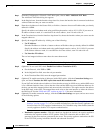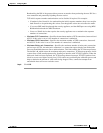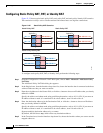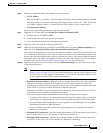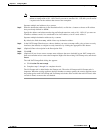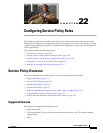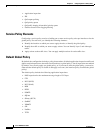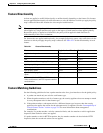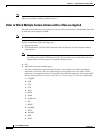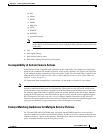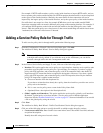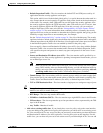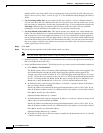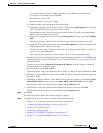
22-2
Cisco ASDM User Guide
OL-16647-01
Chapter 22 Configuring Service Policy Rules
Service Policy Overview
• Application inspection
• IPS
• QoS output policing
• QoS priority queue
• QoS traffic shaping, hierarchical priority queue
• NetFlow Secure Event Logging filtering
Service Policy Elements
Configuring a service policy consists of adding one or more service policy rules per interface or for the
global policy. For each rule, you identify the following elements:
1. Identify the interface to which you want to apply the rule, or identify the global policy.
2. Identify the traffic to which you want to apply actions. You can identify Layer 3 and 4 through
traffic.
3. Apply actions to the traffic class. You can apply multiple actions for each traffic class.
Default Global Policy
By default, the configuration includes a policy that matches all default application inspection traffic and
applies certain inspections to the traffic on all interfaces (a global policy). Not all inspections are enabled
by default. You can only apply one global policy, so if you want to alter the global policy, you need to
either edit the default policy or disable it and apply a new one. (An interface policy overrides the global
policy.)
The default policy includes the following application inspections:
• DNS inspection for the maximum message length of 512 bytes
• FTP
• H323 (H225)
• H323 (RAS)
• RSH
• RTSP
• ESMTP
• SQLnet
• Skinny (SCCP)
• SunRPC
• XDMCP
• SIP
• NetBios
• TFTP



